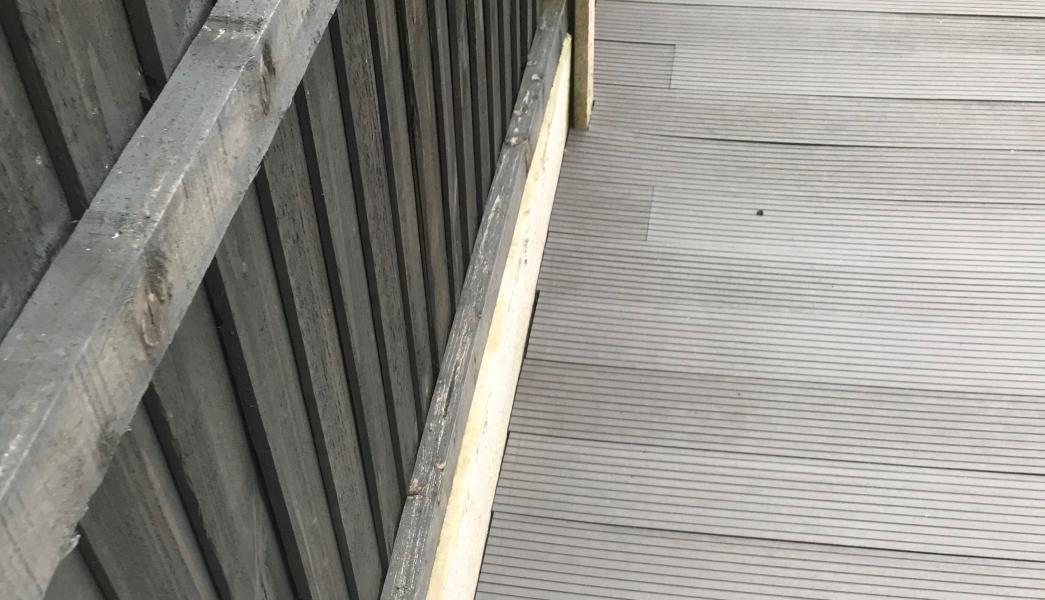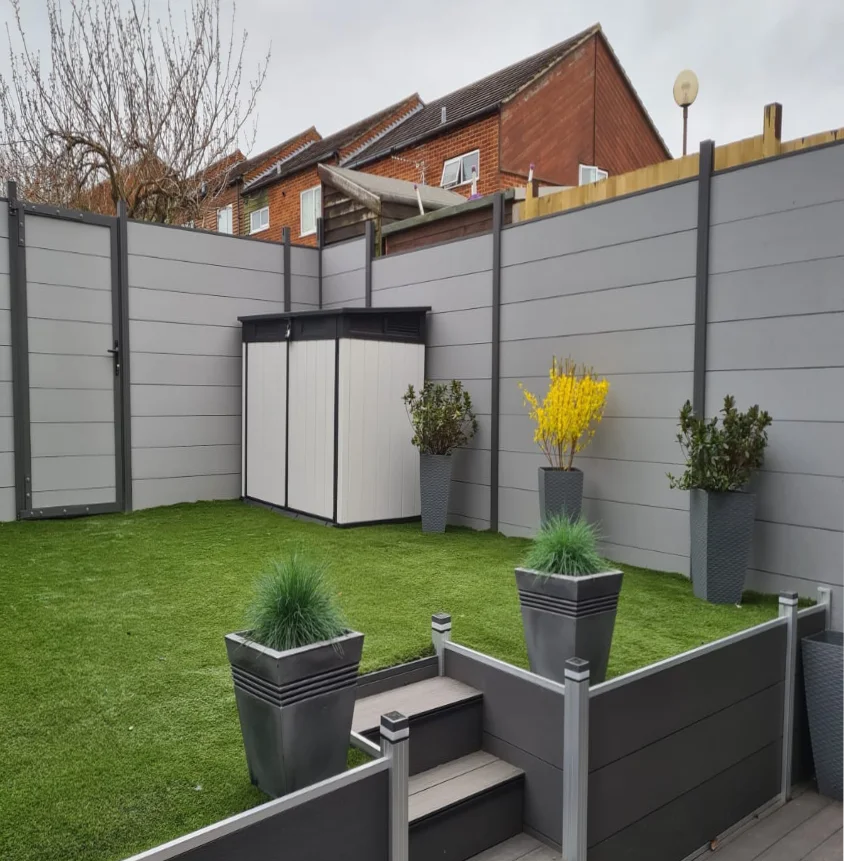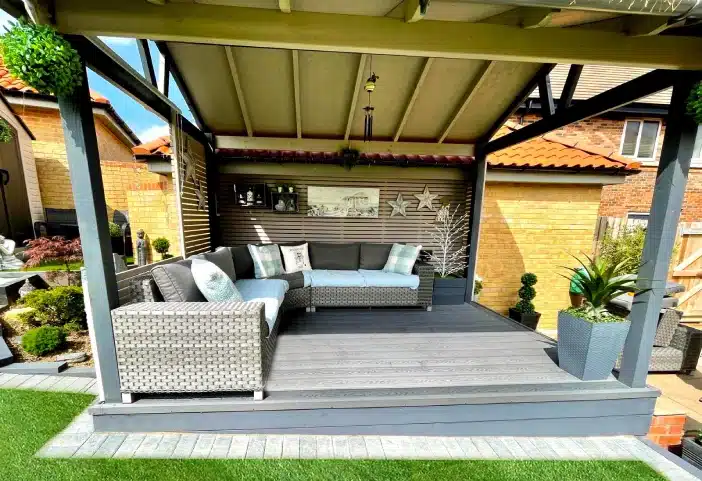What Are The Benefits To Using Composite Fencing
Do Composites Expand and Contract?
As well as traditional wooden decking, composite materials expand and contract, too; it is important to leave adequate gaps when installing composite decking boards to accommodate expansion. Since composite decking is partially made from wood and plastic, you may be wondering: does composite decking expand and contract?
Yes, composite decking will expand and contract in all directions, although not as much from moisture like wood. Composites change in size due to temperature fluctuations. Composites will expand when the temperature is high and contract when the temperature is low. Its worth noting from our internal testing on coefficient of linear thermal expansion, capped composites expand 15% less than first generation uncapped boards when hot.
Please read on to find out what expansion and contraction rates are affected and what precautions you must take to prevent your decking from becoming damaged due to expansion and contraction.
What are expansion and contraction affected by?
Thermal Expansion: - Due to the composition of the materials, composite decking can experience thermal expansion or a slight increase in the board’s size. Relatively high temperatures may expand both the board’s length and width.
Composite Decking Colour: Your chosen colour for composite decking can also affect the expansion rate of the boards. The darker the colour, the more it can absorb heat, thus leading to higher expansion rates for lighter-coloured boards. This will be a factor to consider, especially for those homeowners who have no choice since their composite decking area does not have any shade. If you want to go for a darker colour, then consider building a shaded area with a pergola or an umbrella.
Location of Composite Decking: We know that exposure to heat and colour can affect the expansion of composite decking boards; therefore, planning where your composite decking will be located should be considered. If you do not have a naturally shaded area where you plan to install your composite decking, there are various shade design ideas that you can implement into your garden design. For example, you can use a pergola, umbrella, or hanging parasol to shade your decking.
Spacing Requirements: Different manufacturers and suppliers of composite decking will provide different spacing requirements and installation instructions for their boards. The size of the expansion gap you must leave depends on where you are installing the board. When installing something next to a fixed object, such as a fence or a wall, you must leave at least a 20mm expansion gap between the decking boards and the fixed object. When installing your composite decking boards end to end, the gap should be at least 8mm and at least a 3mm expansion gap for composite decking boards installed side by side.
Joist Spacing: The space between joists should be 300 millimetres (maximum). For commercial projects with more weight due to higher footfall, the joist spacing should be 200mm or lower.
Overhang: Do not overhang composite decking boards by more than 50mm over the joists. By following this guidance, you will prevent splitting and breakages at the ends of the decking boards.
Now, you are aware of all of the necessary precautions you must take to account for composite decking expansion and contraction, but the question is, why do I need to take these precautions? Why is it important?
Why is it important to leave the correct gap?
As mentioned composite decking expands and contracts due to thermal fluctuations. Some customers and fitters make the error of butting the boards together or not leaving the correct gaps during the temperature of installation. This is normally due to two reason in our experience: one butted boards look a lot better visually or two they simply forget/don’t follow the correct guidance.
So, the question you could be thinking is what happens if you don’t, the answer is simple they will lift, warp or crack. The time this takes depends on many factors but this can occur within 6 months or several years and the effect in most cases are irreversible. You will see the the image on your left such damage that can happen.
Understanding composite decking expansion can also make it easier during installation and enable you to correctly and effectively installation your boards, the question you may ask is how?

Makes Installation Easier
At their normal size, composite decking boards are easy to work with. However, as the temperature increases, the boards expand and become pliable. This change can make the cutting and installation process difficult. The contraction of the boards also poses a problem, as you may not be able to install the boards properly.
As a result of this, it is best to install composite decking boards once they have climatised (this is normally 48 hours). When the temperature gets too hot, it’s best to stop for the day and continue when the temperature decreases.
Safety Reasons
Another reason you should be concerned about the contraction and expansion of the boards is safety. As mentioned, if adequate spacing is not included between the boards, they can expand into one another, resulting in damage. The boards can crack, splinter, or warp, which also poses a safety concern.
When choosing composite decking, you may want to use grooved decking boards. These boards do not require drilling or nailing on their surface. Instead, they use a series of clips and hidden fasteners to hold down the boards.
On the other hand, if you are working with ungrooved boards, you need to ensure that pilot holes are drilled before fixing the boards into place with screws to factor in expansion and contraction. A pilot hole allows the screw threads to cut directly into the hole, which reduces the risk of splitting the boards near an end or edge.
Conclusion
Composite decking expands and contract mainly due to temperature fluctuation, this is why leaving gaps between the boards is key to ensure the boards can freely move in length and width form. Its important as mentioned above to allow the boards to climatise for 48 hours once delivered as this can make the installation process a little easier.
Composite Decking Prices & Cost




